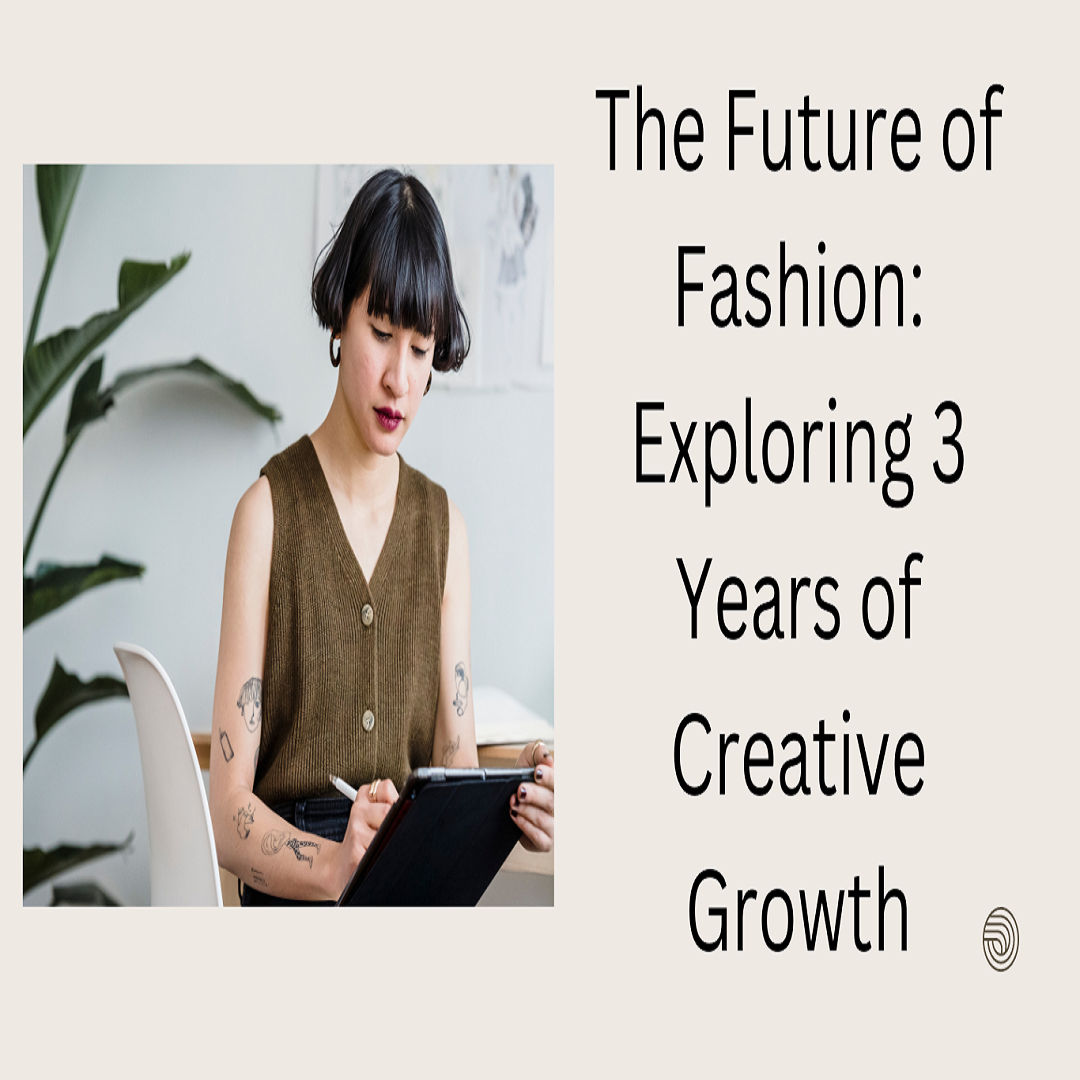
The Future of Fashion: Exploring 3 Years of Creative Growth
The world of fashion is a constantly evolving landscape, with trends and styles shifting like the seasons themselves. Over the past three years, the fashion industry has undergone a remarkable transformation, driven by creativity, sustainability, and technology. In this blog post, we will take a closer look at the exciting developments that have shaped the future of fashion.
1. Sustainable Fashion Takes Center Stage
One of the most significant shifts in the fashion industry over the past three years has been the growing emphasis on sustainability. Fashion brands, both big and small, have been making conscious efforts to reduce their environmental footprint. This includes using eco-friendly materials, adopting ethical production practices, minimizing waste, and even creating new career opportunities for sustainability experts and eco-conscious professionals who are dedicated to transforming the industry’s practices. Consumers are becoming more aware of the impact of their clothing choices on the planet, leading to a surge in demand for sustainable fashion. Brands that prioritize sustainability not only contribute to a healthier environment but also cater to a more eco-conscious customer base. The future of fashion lies in the hands of those who can innovate while minimizing harm to the planet.
2. Digital Fashion and NFTs
The rise of digital fashion and Non-Fungible Tokens (NFTs) has been another game-changer in the fashion industry. Digital clothing, once considered a niche concept, has gained prominence thanks to the metaverse and virtual fashion shows. Fashion enthusiasts can now buy and wear digital garments to express themselves in virtual spaces.
NFTs have also entered the fashion world, allowing designers to tokenize their creations and sell them as unique, collectible items. This not only adds a new dimension to fashion but also provides a novel revenue stream for designers and brands.
3. Inclusivity and Diversity
In the past three years, there has been a significant push for inclusivity and diversity in the fashion industry. Brands are embracing models of all shapes, sizes, ethnicities, and backgrounds, promoting a more representative image of beauty. This shift not only resonates with consumers but also reflects a broader societal change towards acceptance and celebration of diversity.
Inclusivity is not just limited to models; it extends to clothing design as well. Brands are now offering more adaptive and inclusive clothing options, ensuring that everyone can look and feel their best.
4. Technology and AI in Design
Artificial Intelligence (AI) has made its mark on fashion by assisting designers in creating innovative designs and predicting trends. AI algorithms analyze vast amounts of data, from social media trends to historical fashion archives, to provide insights that designers can use to create collections that resonate with consumers.
Additionally, technology has enhanced the shopping experience, with virtual fitting rooms and augmented reality apps allowing customers to try on clothing virtually before making a purchase.
5. Personalization and Customization
Consumers are increasingly seeking unique and personalized fashion experiences. Brands are leveraging technology to offer customization options, allowing customers to tailor their clothing to their preferences. From choosing fabrics and colors to adding personal embroidery, customization is becoming a key trend in the fashion industry.
In conclusion, the future of fashion is a dynamic and exciting one, shaped by sustainability, technology, inclusivity, and personalization. As we reflect on the past three years of creative growth, it is clear that the fashion industry is evolving to meet the changing demands of consumers and the world. The runway ahead promises a more sustainable, inclusive, and tech-savvy fashion landscape that caters to the diverse tastes and values of consumers worldwide. Fashion enthusiasts can look forward to a future that celebrates creativity and innovation in more ways than ever before.
FAQs:
1. How has sustainability impacted the fashion industry in the last three years?
- Answer: Sustainability has become a top priority, with brands adopting eco-friendly materials and ethical production practices to reduce their environmental impact.
2. What is digital fashion, and how is it changing the way we dress?
- Answer: Digital fashion refers to clothing designed for virtual spaces. It allows individuals to express themselves in the metaverse by wearing unique digital garments.
3. How has technology and AI influenced fashion design?
- Answer: AI analyzes data to predict fashion trends and assists designers in creating innovative collections. Technology has also introduced virtual fitting rooms and augmented reality shopping experiences.
4. Why is inclusivity and diversity important in the fashion industry?
- Answer: Inclusivity reflects a broader societal shift towards celebrating diversity. It promotes a more representative image of beauty and ensures that everyone can feel confident in their clothing.
5. What are the benefits of personalized and customized fashion options?
- Answer: Personalization allows customers to tailor clothing to their preferences, creating unique and meaningful fashion pieces. It enhances the shopping experience and fosters a deeper connection between consumers and brands.



